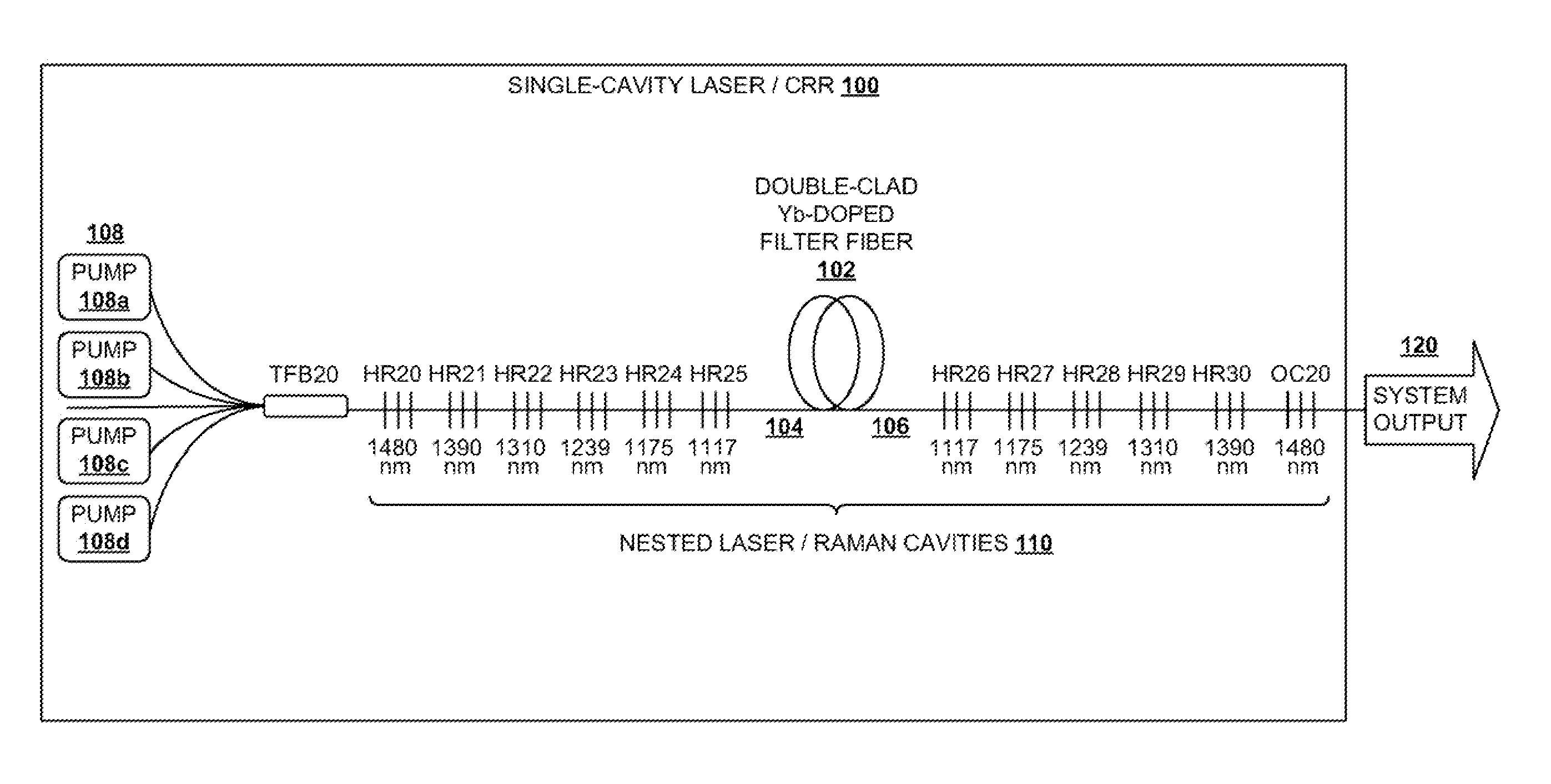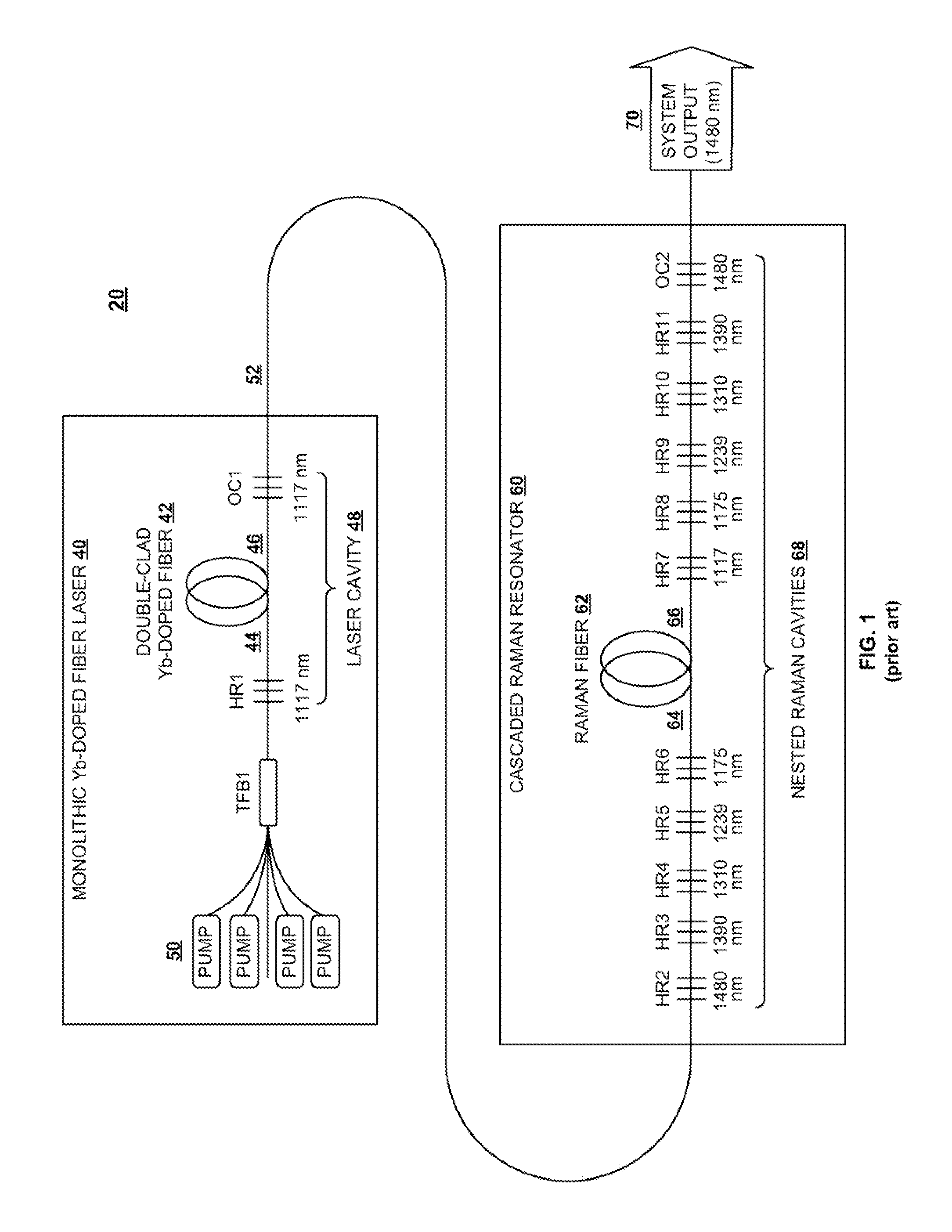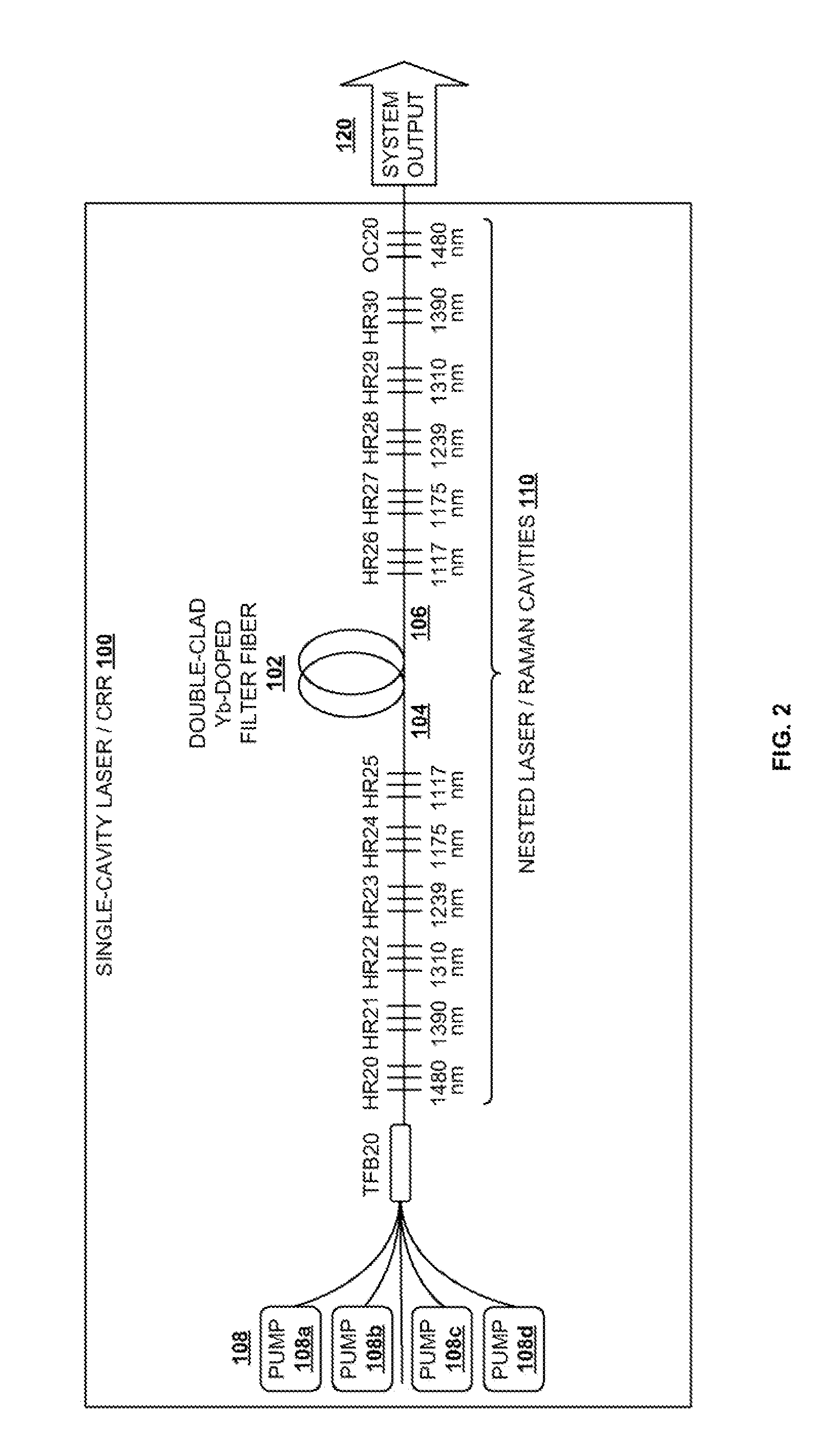Cascaded Raman Fiber Laser System Based on Filter Fiber
a cascaded raman fiber and laser system technology, applied in the field of optical fiber devices and methods, can solve the problems of system instability, prior art system b>20/b> suffers from a number of known drawbacks and limitations, and achieves the effect of reducing the operating threshold and improving device efficiency and operation
- Summary
- Abstract
- Description
- Claims
- Application Information
AI Technical Summary
Benefits of technology
Problems solved by technology
Method used
Image
Examples
Embodiment Construction
[0025]Aspects of the present invention are directed to systems and techniques in which a cascaded Raman resonator (CRR) is pumped at high powers, e.g., on the order of 20 W and above.
[0026]As discussed above, earlier designs suffered from instabilities arising from nested, coupled cavities. One possible solution is to use a master oscillator power amplifier (MOPA) configuration, in which the components of a monolithic high-power Yb fiber laser are separated into a low-power oscillator plus a high-power amplifier. The MOPA configuration allows the oscillator to be effectively isolated from the amplifier and cascaded Raman resonator using a suitable backward propagation prevention device, such as a fiber-coupled isolator or a filter wavelength division multiplexer (WDM), resulting in a system that is capable of reliable operation at 20 W continuous wave (CW) power. This approach is described in U.S. Provisional Patent Application Ser. No. 61 / 177,058, filed on May 11, 2009, which is ow...
PUM
 Login to View More
Login to View More Abstract
Description
Claims
Application Information
 Login to View More
Login to View More - R&D
- Intellectual Property
- Life Sciences
- Materials
- Tech Scout
- Unparalleled Data Quality
- Higher Quality Content
- 60% Fewer Hallucinations
Browse by: Latest US Patents, China's latest patents, Technical Efficacy Thesaurus, Application Domain, Technology Topic, Popular Technical Reports.
© 2025 PatSnap. All rights reserved.Legal|Privacy policy|Modern Slavery Act Transparency Statement|Sitemap|About US| Contact US: help@patsnap.com



